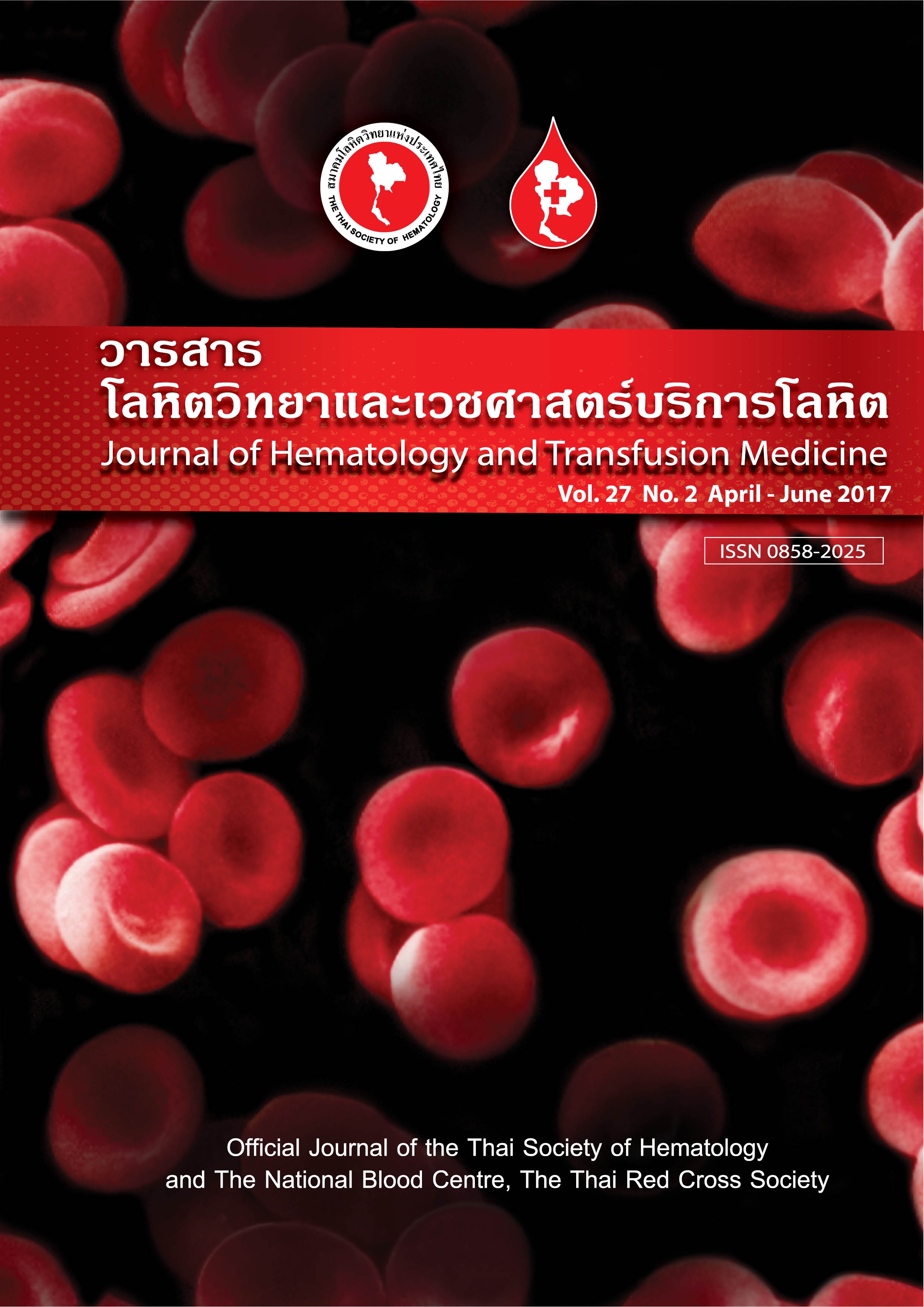Features associated with pulmonary hypertension in splenectomized patients with hemoglobin E/β - thalassemia disease
Abstract
Presently, pulmonary hypertension (PHT) has become more convenient to diagnose because of the greater availability of transthoracic echocardiography (TTE). Thalassemia is a major etiology of PHT due to its large population of patients. However, the mechanisms concerning the disease are still unclear and require further investigation. This present study aimed to find factors correlated with PHT in splenectomized thalassemia patients. Sixty-one splenectomized -thalassemia/Hb E patients were enrolled in the study. Thorough clinical data and laboratory indices were retrospectively reviewed. Among 61 patients, 32 received a diagnosis of PHT by TTE. Pearson’s correlation coefficient was used to ascertain the association between factors. Student’s t-test or Mann -Whitney test was used for continuous variables, while
2-test or Fisher exact test was used for categorical ones. Correlation analysis was used to determine the relationship between pulmonary artery systolic pressure (PASP) and selected variables. Blood transfusion requirement along with lower amount of RBCs were significantly associated with high PASP (p-value < 0.05). High levels of serum globulin, lactate dehydrogenase (LDH) and soluble vascular cell adhesion molecules-1 (sVCAM-1) and low level of cholesterol were identified to relate to PHT ( p-value < 0.05). In summary, hemolytic anemia and increased sVCAM-1 were noted to link with PHT. To prevent PHT in splenectomized thalassemia patients, adequate blood transfusion to avoid chronic hypoxia might be beneficial.



